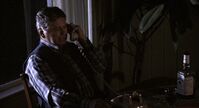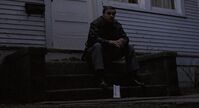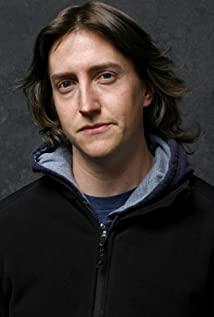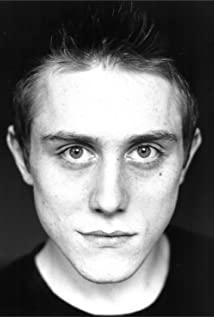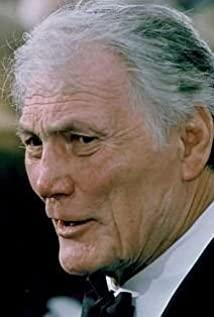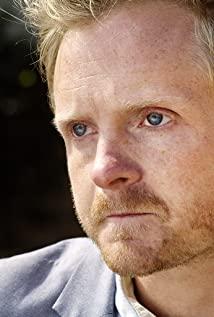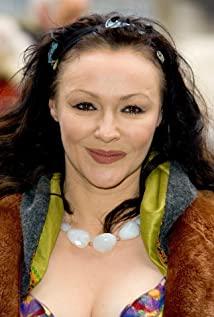-
Ward 2022-10-23 22:49:23
Sean Penn's Debut / Viggo Montensen's Nude Mirror
Recently, I saw Vigo's early work "The Indian Runner", or translated as "Indian Messenger" (the name is more in line with the original meaning). I admit that I went to Vigo to see this movie, and it turned out to be a windfall.
As soon as I saw the visual style of this film, I felt it was very... -
Makayla 2022-10-23 16:57:44
beautiful world
The film in 1991 has been exactly 30 years ago. It stands to reason that it should not have disappeared to such an extent. As a result, I searched the entire Internet and found only one link. After 127 minutes, it was already early morning.
The pace of the film is slow and gloomy. I can't understand...
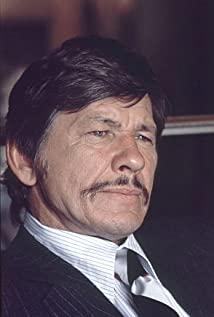
Charles Bronson
Charles Bronson (Charles Bronson, November 3, 1921-August 30, 2003), was born in Ellenfield, Commonwealth of Pennsylvania, United States, and an American film and television actor of The Republic of Lithuania
[1]
.
Charles Bronson began to play some negative roles in Hollywood movies and TV series in 1949. He left the United States in 1968, moved to Europe to fight the world, and became a local action film superstar in one fell swoop. His representative, as the Death Wish series of films in the 1970s, won the "World's Most Popular Artist" in the 1976 Golden Globe Awards in the United States .
Representative works are " The Magnificent Seven ".
Early Experience
Charles Bronson, a classic screen tough guy actor. His signature feature is his weather-beaten face that seems to have not changed, so that some film critics said that "he is the version of Clark Gable who has been exposed to the sun for several hours." Charles Bronson, whose real name is Charles Businski, was born in 1921 in a miner's family in Commonwealth of Pennsylvania. There are 15 children in the family. Both parents work hard in Pennsylvania. Mother Mary was born in Pennsylvania, and his father Vincent was a coal miner and an immigrant from The Republic of Lithuania.
After graduating from high school, Charles followed his father to work in the mining industry (the experience of working in the mine caused him to suffer from confined space phobia). After the outbreak of World War II, he responded to the call to join the army to fight the fascists and became an aircraft gunner. After being demobilized, he entered the school to study fine arts with the help of the Military Placement Act of 1944 (fine arts became his lifelong interest), and then he found a job at the Pasadena Theater in the State of California. A teacher of Charles appreciated the young man's talent and personality, so he introduced him to the director Henry Hathaway, making Charles contribute his screen debut in 1951.
Through this experience, Charles officially began his film career, even though he was like many others on the set at the beginning.
Performing Experience
In 1953, Charles starred in the 3D thriller "Wax Museum" (1953) starring Vincent Price. His role as an evil assistant impressed the audience. In his early performances, he often showed his sturdy figure on the screen, showing his unattainable masculinity.
In his early years, he played in various action movies, some of which were praised by some film critics, such as The Golden Caravan (1954) and Flying Arrow (1957). In 1958, Charles starred in independent film director Roger Coleman's low-cost gangster film "Machine Gun Kelly" (1958), which was well received. Then he starred in the TV series "Man with a camera". Gradually, in the 1960s, Charles established the tone of his screen acting-taciturn, speaking only by action.
In 1960, Charles Bronson starred in " The Magnificent Seven " (1960) directed by John Sturges , playing the role of Irish and Mexican gunman Bernardo O'Reilly. After the film was released, it was well received. Three years later, John once again collaborated with Charles in a major World War II movie "The Great Escape" (1963) (starring Steve McQueen), in which he played the "Gopher" Danny Velinski. After starring in several movies, Charles once again returned to military-themed movies. In 1967, he starred in "The Twelve King Kong" with Lee Marvin and Ernest Bogning. European audience
The simple and rude screen image is very appreciated. Later, Charles Bronson participated in several action movie genre movies, such as " La bataille de San Sebastian " released in 1968 , Sergio Leone’s classic Western film "Once Upon a Time in the West" (1968), and the time. "Passenger in the Rain" (1970) starred by his wife Jill Ailand, and in 1971, he also starred in "The Heroes of the Dragon" with the famous Japanese actor Toshiro Mifune and another well-known screen tough guy Alan Delong. (1970).
After Charles appeared in several European films, American audiences were more willing to see him return to the American public's vision. Indeed, Charles Bronson became the focus of American audiences in the early seventies. Then he went on to star in several tough guys, police and gangster films and feature films, including "The Greed of Man" (1970) and the western revenge film "Wild Wolf" (1972). Back then, he became a hit almost overnight, but he has been working hard during his 25 years as an actor. Charles gradually found a common language with British director Michael Winner, and collaborated with him on several action thrillers that were well received at the time, such as "The Machinist" (later "The Machinist" starring Jason Statham It is a remake of this version) and "Diamond Killer" (1973). Then he starred in "Raptors" (1974) directed by Richard Fletcher, which caused another sensation. But the real breakthrough will have to wait until 1974. In that year, Michael Winner and Charles collaborated on the controversial film "Death Wish" (1974) (the screenplay was originally written for Henry Fonda, but he was dissatisfied with the script itself).
At that time, the crime rate in American cities was on the rise, and a story about a gentle businessman using illegal means to revenge for his wife and daughter just catered to the audience's appetite, and the film was also very popular and a series of sequels were shot. The "Death Wish" series was shot in five episodes, spanning two decades.
Of course, Charles Bronson was not satisfied with confining himself only to the realm of tough guy action movies, and then he played a street boxer in "Quick Whirlwind" (1975) in collaboration with James Cobain. This role was impressive and was later regarded by fans and critics as the most successful role played by Charles Bronson. After that, he brought works such as the western crime film "Death Train" (1975), which was co-operated with his wife Jill Island, the unsuccessful comedy film "Lao Cha's Story" (1976), and Don Siegel's Cold War themed film "Fighting Thunder" (1977).
In the 1980s, Charles was not idle either. At this time, most of his films were mostly crime films with violence as the main theme. In these movies, he became an angel of justice to eradicate the evil, such as "Sentence at Midnight" (1983), "Hands Are Not Merciful" (1984), "Assassination" (1987), "Close Combat" (1989). Charles also shocked a group of film critics for his performance in the plot to murder the leader of the coal miner in the movie "Vengeance", and contributed to Sean Penn's first self-written and directed film "Indian Messenger" (1991) Very interesting performance. At the same time, a sympathetic news editor who starred in the movie "Yes, Paginia, There Really Is Santa" (1991) is also refreshing.
Charles Bronson's last film role in his career was the police chief Paul Finn in the TV movie "The Police Family" series. The three series of films were released in 1995, 1997 and 1999 and received critical acclaim. However, as the age continued to grow, Charles had to face health problems-in the last few years of his life, Charles was reported to suffer from tremor and paralysis . A few years later, he died of pneumonia in Los Angeles in August 2003.
Charles Bronson has a high reputation in the international film world. Although film critics can hardly give good comments on his films, he has been in film for more than 50 years and has countless fans at home and abroad who love him. In the age of videotapes in China, he also brought joy to countless people, which is a childhood memory of many people.
As a filmmaker, Charles Bronson is indeed a rare legend in the film world.
spouse
Kim Wicks (December 22, 1998-August 30, 2003)
Jill Island (October 5, 1968-May 18, 1990) (Jill and Charles are classic screen lovers, Jill died in 1990) had a daughter
Harriet Tendler (1949-1967) (divorced) has two children
Personal Life
Chinese name: Charles·Bronson
English name: Charles Bronson
Sex: Male
Birthday: 1921-11-03
Role: actor, screenwriter
The miner’s son, among the 15 children in the family, is the only one who has completed high school. During the Second World War, he was a machine gunner on a bomber. After he was discharged from the army, he went to study art and worked as a set designer in a performance company. Sometimes he also performed some performances.. In 1949, he began to play some badass roles in Hollywood movies and TV series, but the situation has not improved. As a last resort in 1968, he left the United States and moved to Europe to fight the world. Unexpectedly, he became a local action movie superstar. His representative works include "A Hundred Thousand Miles of Wild Sand", "Weirdo in the Rain" and so on. In 1971, he also won the "World's Most Popular Movie Star" trophy at the Golden Globe Awards . Bronson returned home in 1972, starring in the Hollywood black film " The Greed of Man ", and two years later he created his career peak with " Death Wish ". There have been five sequels of this film in twenty years. After the 1980s, its status as an action superstar was gradually replaced, and he could only shoot some B-movies . On August 30, 2003, Charles Bronson died of pneumonia in a Los Angeles hospital at the age of 82.
Biography for Charles Bronson (Data from imdb)
Date of Birth
3 November 1921, Ehrenfeld, Pennsylvania, USA
Date of Death
30 August 2003, Los Angeles, California, USA. (pneumonia and Alzheimer's disease)
Birth Name
Charles Dennis Buchinsky
Nickname
Il Brutto (Italy)
Le Sacre Monstre (France)
Height
5'10" (1.78 m)
Mini Biography
The archetypal screen tough guy with weatherbeaten features-one film critic described his rugged looks as "a Clark Gable who had been left out in the sun too long"-Charles Bronson was born Charles Buchinski, one of 14 children of struggling Polish immigrant parents in Pennsylvania (his father was a coal miner). He completed high school and joined his father in the mines (an experience that resulted in a lifetime fear of being in enclosed spaces) and then served in WW II. After his return from the war, Bronson used the GI Bill to study art (a passion he had for the rest of his life), then enrolled at the Pasadena Playhouse in California. One of his teachers was impressed with the young man and recommended him to director Henry Hathaway, resulting in Bronson making his film debut in You're in the Navy Now (1951).He appeared on screen often early in his career, though often uncredited. However, he made an impact on audiences as the evil assistant to Vincent Price in the 3-D thriller House of Wax (1953). His sinewy yet muscular physique got him cast in action-type roles, often without a shirt to highlight his manly frame. He received positive notices from critics for his performances in Vera Cruz (1954), Target Zero (1955) and Run of the Arrow (1957). Indie director Roger Corman cast him as the lead in his well-received low-budget gangster flick Machine-Gun Kelly (1958), then Bronson scored the lead in his own TV series, "Man with a Camera" (1958). The 1960s proved to be the era in which Bronson made his reputation as a man of few words but much action. Director John Sturges cast him as half Irish/half Mexican gunslinger Bernardo O'Reilly in the smash hit western The Magnificent Seven (1960), and hired him again as tunnel rat Danny Velinski for the WWII POW big budget epic The Great Escape (1963). Several more strong roles followed, then once again Bronson was back in military uniform, alongside Lee Marvin and Ernest Borgnine in the testosterone-filled The Dirty Dozen (1967). European audiences had taken a shine to his minimalist acting style, and he headed to the Continent to star in several action-oriented films, including Bataille de San Sebastian, La (1968) (aka "Guns for San Sebastian"), the cult western C'era una volta il West (1968) (aka "Once Upon a Time in The West"), Passager de la pluie, Le ( 1969) (aka "Rider On The Rain") and, in one of the quirkier examples of international casting,alongside Japansese screen legend Toshirô Mifune in the western Soleil rouge (1971) (aka "Red Sun"). American audiences were by nowkeento see Bronson back on US soil, and he returned triumphantly in the early 1970s to take the lead in more hard-edged crime and western dramas, including The Valachi Papers (1972) and the revenge western Chato's Land (1972). After nearly 25 years as a working actor, he became an overnight sensation. Bronson then hooked up with British director Michael Winner to star in several highly successful urban crime thrillers, including The Mechanic (1972) and The Stone Killer (1973). He then scored a solid hit as a Colorado melon farmer-done-wrong in Richard Fleischer's Mr. Majestyk (1974). However, the film that proved to be a breakthrough for both Bronson and Winner came in 1974 with the release of the controversial Death Wish (1974) ( written with Henry Fonda in mind, who was disgusted by the script).The US was at the time in the midst of rising street crime, and audiences flocked to see a story about a mild-mannered architect who seeks revenge for the murder of his wife and rape of his daughter by gunning down hoods, rapists and killers on the streets of New York City. So popular was the film that it spawned four increasingly inferior sequels over the next 20 years.
Action fans could not get enough of tough guy Bronson, and he appeared in what many fans, and critics, consider his best role-as Depression-era streetfighter Chaney alongside James Coburn in the superb Hard Times (1975). That was followed by the somewhat slow-paced but beautifully photographed western Breakheart Pass (1975) (with wife Jill Ireland), the light-hearted romp (a flop) From Noon Till Three (1976), and as Soviet agent Grigori Borsov in director Don Siegel's decent Cold War thriller Telefon (1977). Bronson remained busy throughout the 1980s, with most of his films taking a more violent tone, and he was pitched as an avenging angel eradicating evildoers in films like the mediocre 10 to Midnight (1983), the nearly unwatchable The Evil That Men Do (1984), Assassination (1987) and Kinjite: Forbidden Subjects (1989).Bronson jolted many critics with his forceful work as murdered United Mine Workers leader Jock Yablonski in the TV movie Act of Vengeance (1986) (TV), gave a very interesting performance in the Sean Penn-directed The Indian Runner (1991), and surprised everyone with his appearance as compassionate newspaper editor Francis Church in the family film Yes Virginia, There Is a Santa Claus (1991) (TV).
Bronson's final film roles were as police commissioner Paul Fein in a well-received trio of crime/drama TV movies Family of Cops (1995) (TV), Breach of Faith: Family of Cops II (1997) (TV) and Family of Cops III: Under Suspicion (1999) (TV). Unfortunately, ill health began to take its toll; he suffered from Alzheimers disease for the last few years of his life, and finally passed away from pneumonia at Los Angeles' Cedars-Sinai Medical Center in August 2003. Bronson was a true icon of international cinema; critics had few good things to say about his films, but he remained a fan favorite in both the US and abroad for 50 years, a claim few other film legends can make.
Spouse
Kim Weeks (22 December 1998-30 August 2003) (his death)
Jill Ireland (5 October 1968-18 May 1990) (her death) 1 daughter
Harriet Tendler (1949-1967) (divorced) 2 children
Trivia
Shared a room with Jack Klugman in a New York boarding house in the 1940s.
He had two children with his first wife, Tony and Suzanne. He then married Jill Ireland, who had two sons with her first husband, David McCallum. One adopted son (Jason) died in 1989. He and Ireland had a daughter named Zuleika.
Perhaps the biggest late bloomer in Hollywood history, he did not get the marquee treatment he deserved until his late 40s. He was already 53 when Death Wish (1974) premiered.
The name Bronson is said to taken from the "Bronson Gate" at Paramount Studios, at the north end of Bronson Avenue.
Spoofed in an episode of "The Simpsons" (1989) in which the Simpson family mistakenly travels to Bronson, Missouri, instead of Branson. In Bronson, such lines of dialogue as these are spoken by its citizens: "No dice.", " This ain't ovah."
Changed his stage name in the early 1950s in the midst of the McCarthy "Red Scare" at the suggestion of his agent, who was fearful that his last name (Buchinsky) would damage his career.
Actor Dick Van Dyke received a lemon cake every Christmas from Bronson, who lived nearby in Malibu for 16 years
In 1949 he moved to California, where he signed up for acting lessons at the Pasadena Playhouse
In 1954 on the Mexican set of Vera Cruz (1954), he and fellow cast member Ernest Borgnine--who were playing American gunfighters involved in the Mexican fight against the French--had some spare time on their hands and decided to go to a nearby town for cigarettes. They saddled up in costume, sidearms and all, and began riding to town. On the way they were spotted by a truck full of Mexican "federales"--national police--who mistook them for bandits and held them at gunpoint until their identities could be verified.
Was drafted into the army in 1943 and assigned to the Air Corps. At first he was a truck driver, but was later trained as a bomber tail gunner and assigned to a B-29. He flew 25 missions and received, among other decorations, a Purple Heart for wounds incurred in battle.
"I am not a Casper Milquetoast," Bronson told The Washington Post in 1985, recalling the time he was visiting Rome and felt someone stick a gun in his side. "A guy in broken English asked me for money. I said,'You give ME money.' He turned around and walked away."
Director John Huston once summed him up as "a grenade with the pin pulled"
Was by all accounts a very quiet and introspective collaborator, often sitting in a corner for much of a shoot and listening to a director's instructions and not saying a word until cameras were rolling.
Was the first actor considered for the role of Snake Plissken in Escape from New York (1981)
He grew privately frustrated by the declining quality and range of roles over his career, being pigeonholed as a violent vigilante after the commercial success of Death Wish (1974). His own favorite of his "vigilante" movies was C'era una volta il West (1968) (aka Once Upon a Time in the West).
In 1963 Sergio Leone asked him to star in his western Per un pugno di dollari (1964) (A Fistful of Dollars). Bronson turned the role down, so Leone asked Clint Eastwood.
His father died when he was 10, and at 16 he followed his brothers into the mines to support the family. He was paid $1 per ton of coal and volunteered for perilous jobs because the pay was better.
Responding to critics' complaints, he said: "We don't make movies for critics, since they don't pay to see them anyhow."
Called West Windsor, Vermont his home for more than three decades (Bronson Farm), and was buried in nearby Brownsville Cemetery, near the foot of Mt. Ascutney.
Appeared with Steve McQueen and James Coburn in two films, both of which were directed by John Sturges: The Magnificent Seven (1960) and The Great Escape (1963).
With his death on August 30, 2003, Robert Vaughn and Eli Wallach are the only two of the seven main stars of the The Magnificent Seven (1960) who are still alive as of November 2005.
His stepson, Jason McCallum Bronson, the adoptive son of David McCallum and Jill Ireland, died of an accidental drug overdose in 1989.
Was introduced to his second wife, Jill Ireland, by her then-husband David McCallum during the filming of The Great Escape (1963).
Spoke fluent Russian, Lithuanian and Greek.
Owned homes in Europe, including Lithuania and Greece.
Had hip replacement surgery in August 1998.
The voice of the sarcastic store clerk in "The Simpsons" (1989) is based on him.
Sergio Leone once called him "the greatest actor I ever worked with". Leone had wanted Bronson for all three of what became known as the "Man with No Name" trilogy, but Bronson turned him down each time.
The term "Charles Bronson" is frequently uttered in Reservoir Dogs (1992) in reference to a hard-man.
He was very active in raising funds for the John Wayne Cancer Institute.
Advertised Mandom hair oil.
Capable of essaying a variety of types, from Russian to American Indian, from homicidal villain to tight-lipped hero, Bronson suddenly became a star at the age of 50. Following the success of Death Wish (1974) he repeated, with little variation, his role as a vengeful urban vigilante.
In the latter part of his career, he worked predominantly with The Guns of Navarone (1961) director J. Lee Thompson. They made nine films together in just over a decade between 1977 and 1989: 10 to Midnight (1983), Caboblanco (1980) ), Death Wish 4: The Crackdown (1987), The Evil That Men Do (1984), Kinjite: Forbidden Subjects (1989), Messenger of Death (1988), Murphy's Law (1986), St. Ives (1976) and The White Buffalo (1977).
From a Lithuanian family, he grew up in a western Pennsylvania coal-mining town. Like all the men in his family, he worked in the mines, but hated it and used a variety of means to escape it (including the military and, eventually , acting). His expertise with tunneling and working underground turned out to be quite helpful when making The Great Escape (1963) in the role of "Tunnel King" Velinski. However, even though the "tunnel" he was working in was a cutaway set, he could only stay in it for a few minutes at a time before he had to get up and leave. As a boy working in the mines, he was caught in a cave-in and almost died before he was finally rescued. Ever since that time he had had a deathly fear of enclosed spaces.
Made six films with director Michael Winner: Chato's Land (1972), The Mechanic (1972), The Stone Killer (1973), Death Wish (1974), Death Wish II (1982) and Death Wish 3 (1985).
In the '90s a lady whom he'd never met left him her estate worth well over a million dollars. She was a big fan of his. Her family sued and he ended up settling with them out of court.
Diagnosed with Alzheimer's disease in 2000 after suffering ill health for the previous two years.
Retired from acting after undergoing hip replacement surgery in 1998.
The Japanese manga artist Yoshiyuki Okamura, famed for the Fist of the Northstar manga sometimes credit himself under the name of Buronson, after Bronson and sports a similar moustache.
He and his wife Jill Ireland adopted Katrina Holden Bronson after her mother Hilary Holden died in 1983.
Personal Quotes
"I guess I look like a rock quarry that someone has dynamited."
"Acting is the easiest thing I've done, I guess that's why I'm stuck with it."
"Someday I'd like a part where I can lean my elbow against a mantlepiece and have a cocktail."
"I don't look like someone who leans on a mantelpiece with a cocktail in my hand, you know. I look like the kind of guy who has a bottle of beer in my hand."
"Maybe I'm too masculine. Casting directors cast in their own, or an idealized image. Maybe I don't look like anybody's ideal." (1971)
"I am not a fan of myself."
Nobody stays on top forever. Nobody!
Salary
10 to Midnight (1983) $2,000,000
Death Wish (1974) $1,000,000
Valdez, il mezzosangue (1973) $1,000,000
The Stone Killer (1973) $1,000,000
translation:
Passed to Charles Bronson (data from imdb)
date of birth
November 3, 1921, Ehrenfeld, Pennsylvania, USA
Date of death
August 30, 2003, Los Angeles, State of California, USA. ( Pneumonia and Alzheimer's disease )
Birth name
Charles Dennis Buchinsky
Nick name
Interleukin brutto (Italy)
Le Saint monstre (France)
high
5'10" (1.78 meters)
Sharing a room: with Jack Klugman in a new New York boarding House of Commons in the 1940s.
He had two children with his first wife, Tony and Susan. Then, he was married, Xiaojie Ireland , who had two sons, and his first husband, David McAllen. An adopted son (Jason) died in 1989. He and Ireland have a daughter named zuleika.
Perhaps the biggest night of bloomer in Hollywood history, he didn't get treatment on his shoulders, and he deserved it until his late 40s. He has already premiered at 53, Hope of Death (1974).
The name Bronson said, take the route from the "Bronson Gate" at Paramount Studios to Bronson at the northern end.
Deceptively in the episode " Simpsons-La película, Los " (1989), in which Simpsons-La película, Los went to Bronson, Missouri, instead of Bronson. In Bronson, as the line of dialogue, because of these statements, its citizens said: "No dice", "This is not ovah."
Changed his stage name in the early 1950s in McCarthy's " Red Scare " suggestion, his agent, who was afraid that his surname (buchinsky) would harm his career.
Actor Dick Van Dyke received the lemon cake every Christmas, from Bronson, who lived in nearby Malibu for 16 years
In 1949, he moved to the State of California , where he signed for acting lessons, at the Pasadena Theater
In 1954 against Mexico’s set of Tiburones Veracruz (1954), he and his compatriots cast member Ernest Borgnin-who played American g unfighters involved fighting French in Mexico-had some free time in their hands and decided Cigarettes to a nearby city. They were burdened in costumes, sidearms and all, and began to ride the city. On the way forward, they found a truck filled with Mexican "federales"-the national police-who mistakenly thought they were bandits and held them at gunpoint until their identities can be verified.
Drafted into the army and assigned to the Air Force in 1943. At first he was a truck driver , but later trained as a bomber tail gunner and assigned to the B-29. He flew to 25 missions and received, among other decorations, the Purple Heart, the battle for wounds.
"I'm not a Jeder für sich und Gott gegen alle milquetoast," Bronson told the Washington Post in 1985, looking back on the time he visited Rome, and thought someone insisted on using a gun by his side. "Think about it, in breaking English and asking me for money, I said,'You give me money. He turned around and walked away."
Director John Houston, once he summed it up as "throwing a grenade, pulling with the pin"
It was made by a very quiet and reflective collaborator of all accounts, who often sat in the corner for most of the shooting, and listened to the director’s instructions, and did not say a word until the camera rolled.
Was the first actor to consider the role of Snake, Plissken in Escape by New York (1981)
He grew up in personal frustration with a decline in quality and scope of roles that surpassed his career, being pigeonholed as a violent citizen after the death of hope for commercial success (1974). His own favorite of his "people" movie is c'era United Nations Association Walter Kim Jong Il West (1968) (also known as Huang Feihong's time in the western region).
In 1963 Sergio asked him about the financing, to star in his western %pugno di dollari (1964) (a fistful dollar). Bronson, put the role, so ask Clint Eastwood for financing.
When his father died, he was 10 and 16, and he followed his brother to the mine to support the family. He paid 1 yuan per ton of coal and voluntary dangerous work because the salary was better.
Responding to complaints from critics, he said: "We don't criticize the movie because they don't pay to see them anyway."
The so-called West Vinsor , Vermont's home for more than three years (Bronson Farm), and was buried in the nearby Brownsvill Cemetery, at the foot of the nearby mountain. ascutney.
Appeared with Steve McQueen and James Coburn in two films, both of which were directed by John Sturges: The Magnificent Seven (1960) and The Great Escape (1963).
With his death on August 30, 2003, Robert Vaughan and Eli Wallach are the only two of the magnificent seven major stars (1960) who are still alive as of November 2005.
His stepson, Jason McAllen Bronson, adopted sons David McAllen and Xiaojie Ireland , died of an accidental drug overdose in 1989.
Introduced his second wife, Xiaojie Ireland, her husband at the time David McCallum was filming The Great Escape (1963).
He speaks fluent Russian, The Republic of Lithuania and Greece.
State-owned homes are in Europe, including The Republic of Lithuania and Greece.
Had hip replacement surgery in August 1998.
The voice of the shop assistant in " Simpsons-La película, Los " (1989) is based on him.
After Sergio's financing, he called him "the biggest actor is my job". Raising originally wanted Bronson for all three to become a trilogy called "Men Without a Name", but Bronson made him fall every time.
The term "Charles Bronson" is often said by a hard reference in Reservoir Dog (1992).
He is very active in raising funds for the John Wayne Cancer Institute.
Advertising mandom hair oil.
Able to essay many types, from Russians to American Indians, from murderous villains, to keep one's mouth shut as that of a jar hero, Bronson suddenly became a star at the age of 50. Following the hope of a successful death (1974), he repeated, with little change, his role as a revenge for urban security.
In the latter part of his career, his work was mainly with Gun's navarone (1961) director Li Du Thompson. They made 9 movies together in just over a decade, between 1977 and 1989: 10 to midnight (1983), Caboblanco (1980), Death Hope 4: Combat (1987), The Evil Man Do (1984), Kinjite: Prohibited Subjects (1989), Death of the Messenger (1988), Murphy's Law (1986), St. Ives (1976) and White Buffalo (1977).
From a family in The Republic of Lithuania , he grew up in a coal mining city in the Western Commonwealth of Pennsylvania . Like all men in his family, he was in a landmine, but hated it and used various means to escape it (including the military and eventually acting as an agent). His expertise with tunnels and underground work turned out to be quite helpful when The Great Escape (1963) played the role of "Tunnel King" Velinski. However, even if the "tunnel" he was working on was a section set, he could only stay in it for a few minutes, and before a time, he had to stand up and leave. Working as a boy, he was caught in a cave in a mine. He was finally rescued almost before his death. Ever since then he has had a deathly horrified enclosed space.
Won 6 titles with director Michael: Chato’s Land (1972), Machinery (1972), Stone Killer (1973), Death Wants (1974), Death Wants Two (1982) and Death Hope Three (1985) year) .
In the nineties, a man he had never seen was leaving him with the value of her real estate, and more than $1 million. She is a big fan of him. Her family sued and he ended and settled them out of the court.
Diagnosed with Alzheimer's disease in 2000 after suffering from poor health for the first two years.
After retiring, the acting agent underwent hip replacement surgery in 1998.
Japanese manga artist Yoshiokamura, famous for the fist northstar manga, sometimes credits his own name, after Buronson, Bronson and sports similar beards.
He and his wife Jill Ireland passed Hurricane Katrina Holden Bronson after her mother Hilary Holden died in 1983.
Salary:
10th to midnight (1983) 2,000,000 yuan
Hope of Death (1974) $ 1,000,000
Valdez, Interleukinmezzosangue (1973) $ 1,000,000
The Stone Killer (1973) $ 1,000,000
Character Evaluation
"I guess I don't look like someone dynamited in a rock quarry."
"Acting is the easiest thing I have done. I guess that's why I insist on it."
"One day, I want a part if I can lean my elbow on the mantlepiece and have a cocktail".
"I'm not like someone who leaned on a mantelpiece with a reception, in my hand, you know, I want to see what kind of guy who has a bottle of beer in my hand."
"Maybe I'm too masculine. Casting directors to cast themselves, or an idealized image, maybe I don't like to look at anyone's ideals." (1971)
"I am not a fan myself".
No one stays at the top forever. nobody!
Extended Reading
-
Frank: What are you doing here? D'you come here to fucking guilt me to death?
-
Dorothy: [Staring a bearded lady smoking in a corner] That woman's got a beard.




